When it comes to terrarium building, there’s nothing quite like getting your hands dirty. However (for your sanity), there are some tasks that you will definitely want to use a terrarium tool for.
Trust me; you can only attempt to squish your hand in so many ways.
This list is split into two sections: essential tools for every build and tools for more niche jobs.
So, before you drop your plants for the 100th time and find yourself ready to throw your creation out the window – do yourself a favor and pick up a few things from this list.
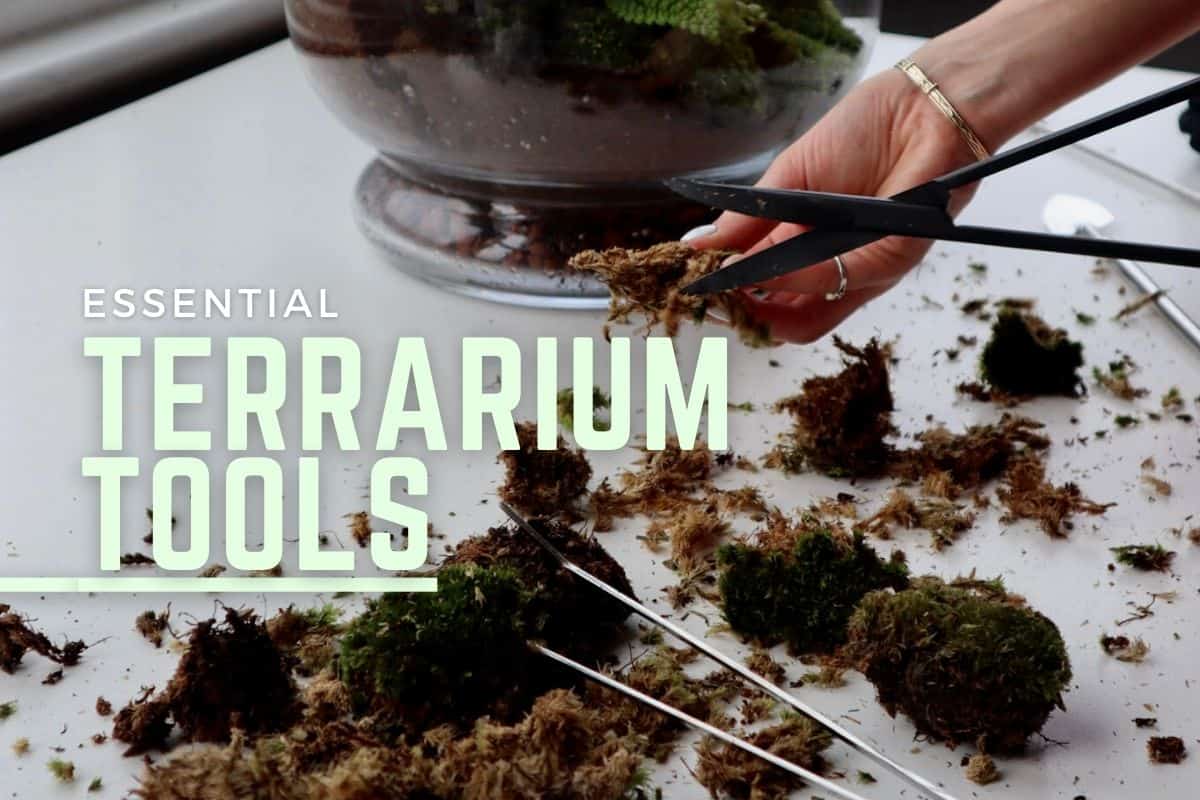
Terrarium Tribe is reader-supported. When you purchase through links on our site, we may earn an affiliate commission (at no further cost to you). 💜
Essential Terrarium Tools
1. Tweezers (The Grabber)
The Grabber is the most important tool for building terrariums.
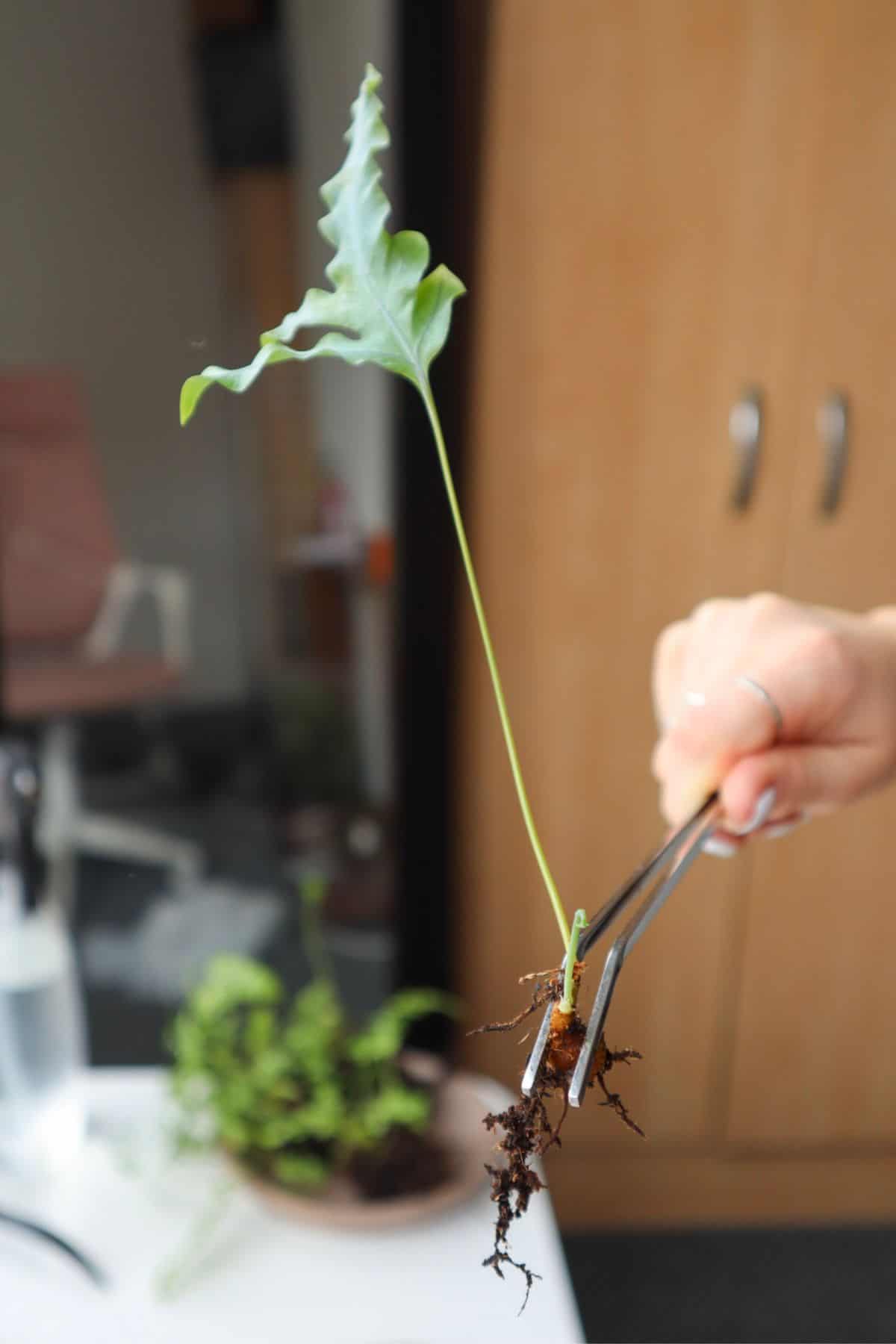
It’s especially important for terrariums with narrow openings that you can’t fit your hand through (like super tiny terrariums). Still, even open terrariums are much easier with the added dexterity of a precise grabbing tool.
The best option is a pair of long steel aquascaping tweezers. You can choose slanted or straight ones.
👉 Check out the aquascaping tweezers on Buceplant and Etsy.
They’re nice and long, so you can reach the bottom of a taller terrarium, and if you choose the ones with slanted tips – they’re great for maneuvering into awkward places.
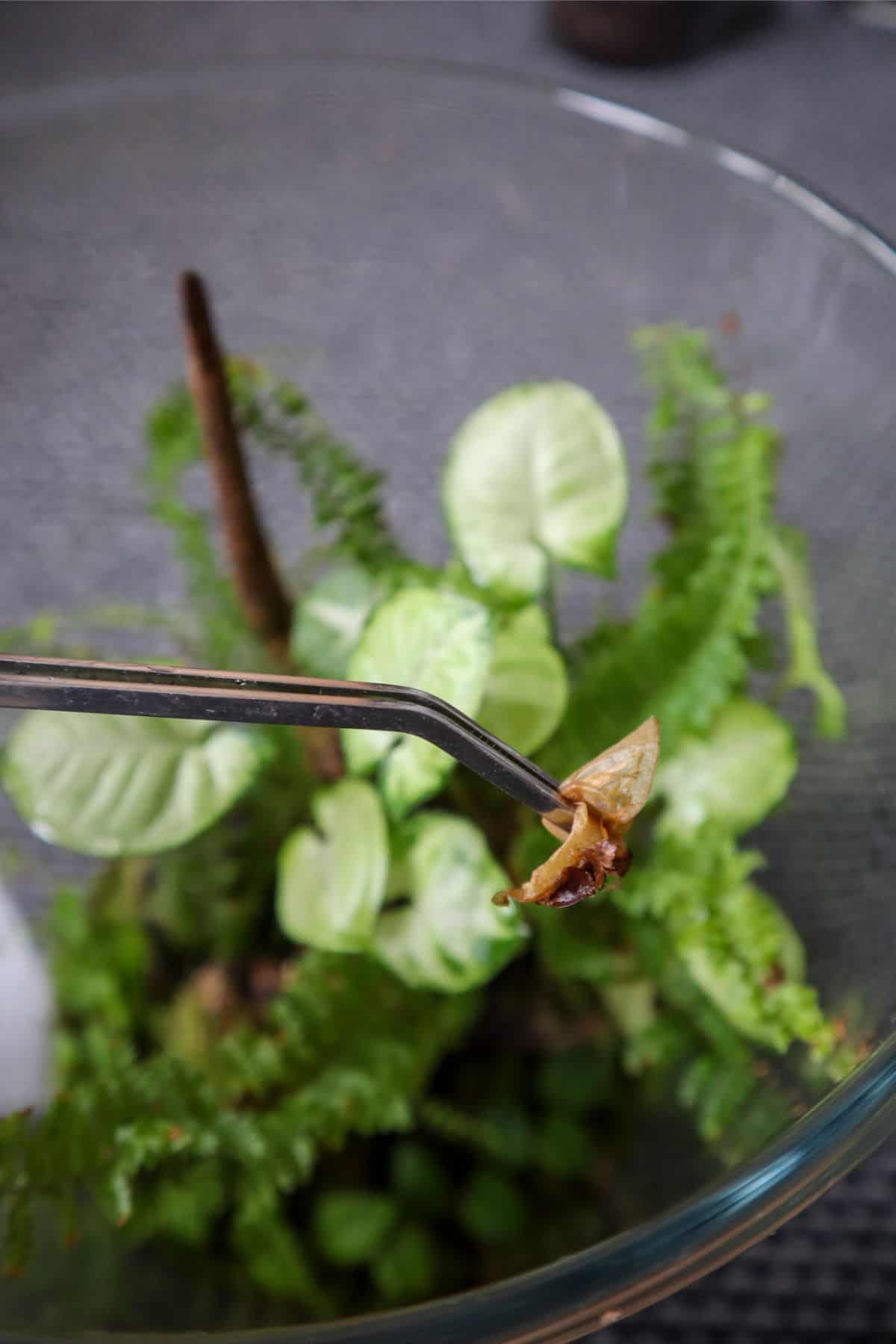
If you’re a whizz with chopsticks – they can work in a pinch (pun intended), but in my experience, they don’t give the same level of precision.
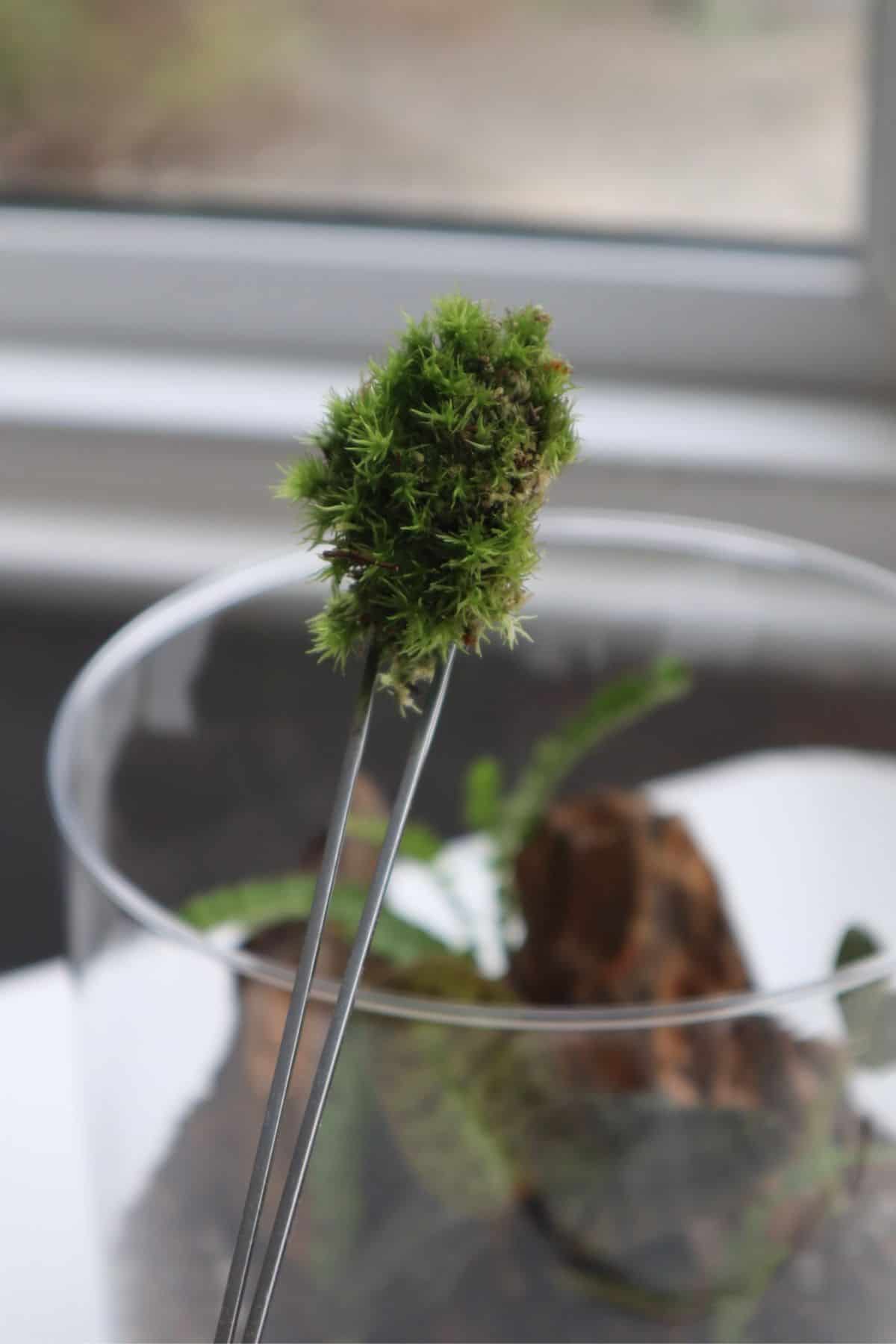
2. Fork or Spoon (The Raker/Digger)
The next thing you’ll need is something to move substrate around.
Unless you’re building in a big carboy or demijohn container with a big volume and narrow opening (in which case telescopic tools will be necessary), you don’t need anything specialist for this function.
A long spoon and fork will do the job for most builds, but I use a miniature telescopic rake and spade because I’m fancy.
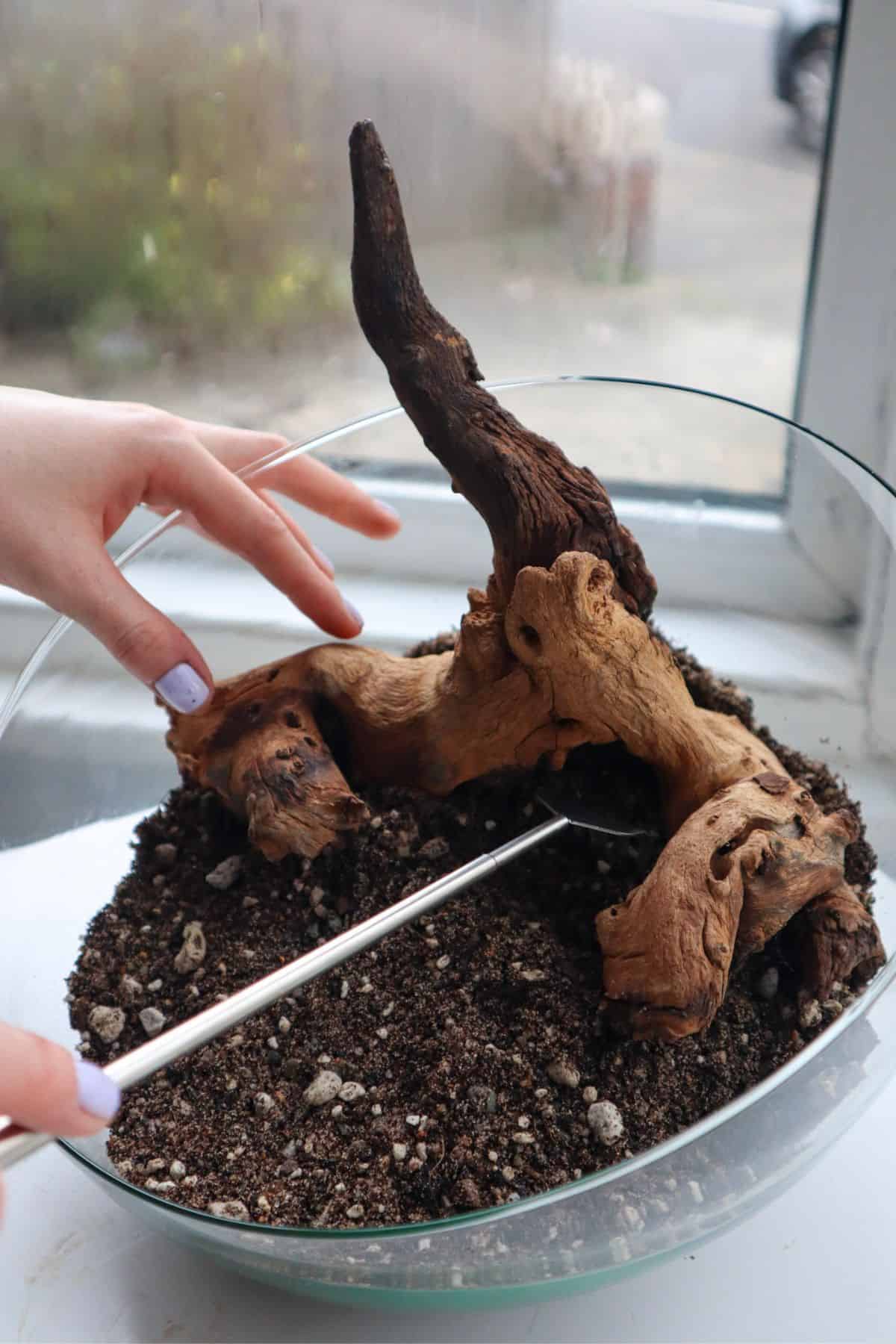
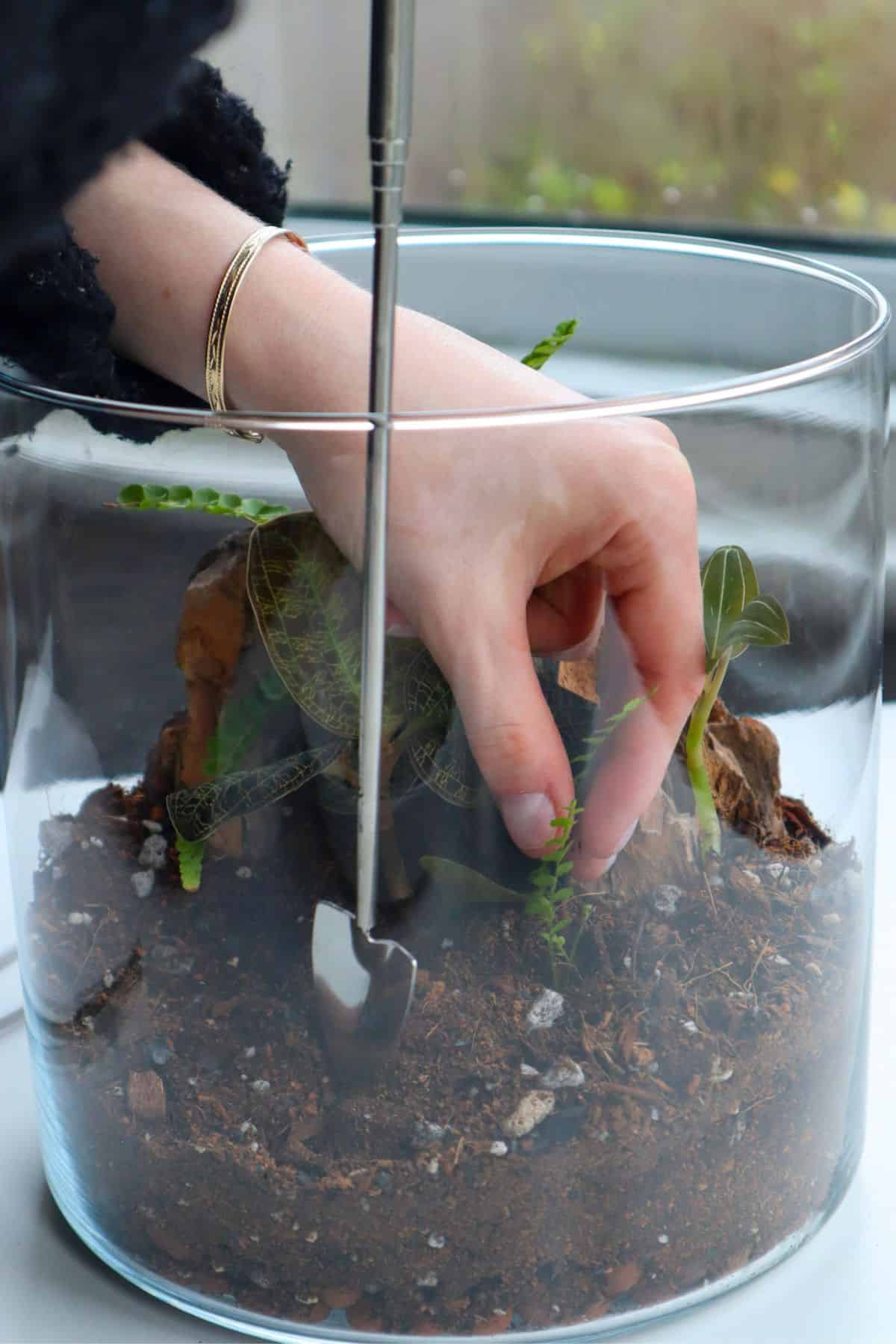
👉 Check out telescopic terrarium tools on Etsy.
3. Scissors (The Trimmer)
Terrarium plants are selected for being small, but they often still need a trim to get them down to size (and keep them that way).
Again, for some builds, your standard household scissors will do the trick, but for some builds, you’ll want a long, thin pair. And again, we have the world of aquascaping to thank for the perfect tool.
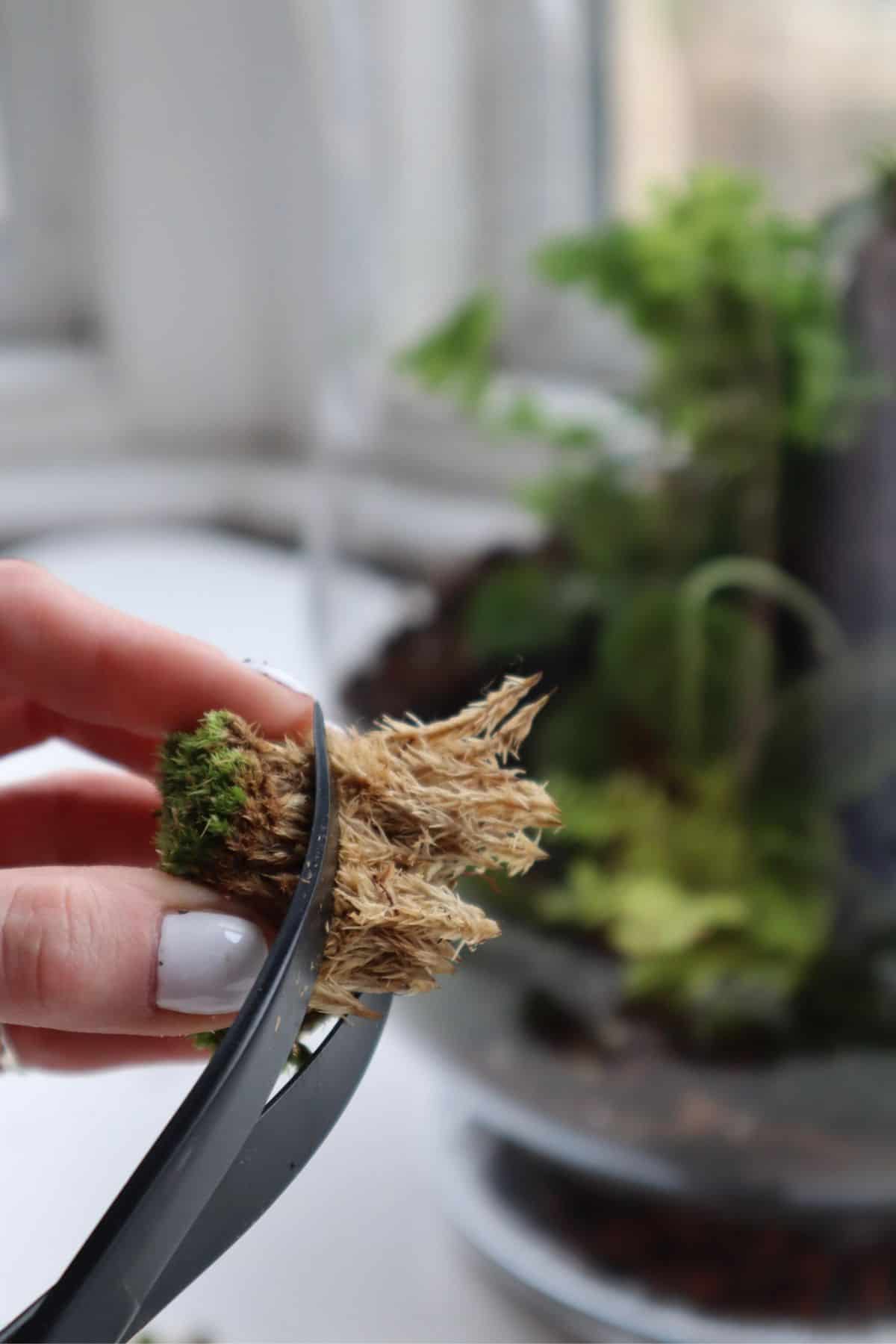
The curved ones are perfect for precision trimming and getting the right angle.
👉 Check out the aquascaping scissors on Buceplant and Etsy.
*Pro tip from someone who’s had one too many sacrificial fronds – use your tweezers to hold things you don’t want to cut out of the way, so you don’t accidentally snip them.
4. Brush (The Cleaner-Upper)
Brushes come in handy during your terrarium build when you’ve finished placing everything and need to tidy it up.
I’d recommend a soft-bristled brush to clean the inevitably messy substrate off plants, hardscape, and the glass container.
I found my handy brush in a hardware shop for less than $5 (it was literally called the “Handy Brush”).
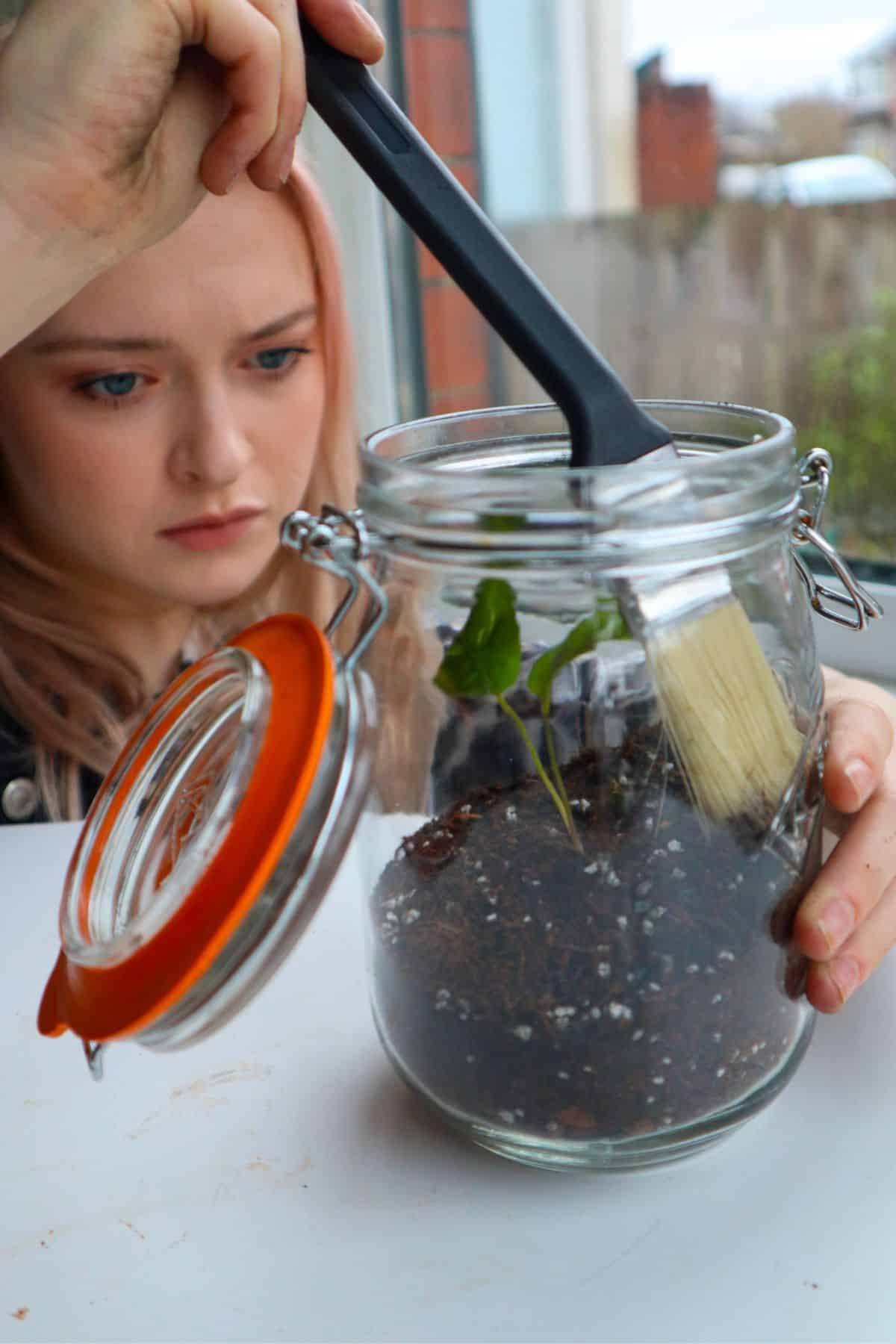
Like the curved scissors, the angled head makes it great for reaching around corners and under branches in a terrarium – it’s very helpful.
👉 Check out the angled brushes on Amazon.
5. Mister/Spray Bottle (The Life-Giver)
When watering terrarium plants, it’s essential that water is distributed evenly (and ideally) as delicately as possible.
Otherwise, it’s like blasting your miniature plants with a fire hose. You’ll literally blow them away.
I’ve used a plant mister in the past, as it’s very gentle, and there’s no risk of overdoing it. But, honestly, I find they break way too quickly.
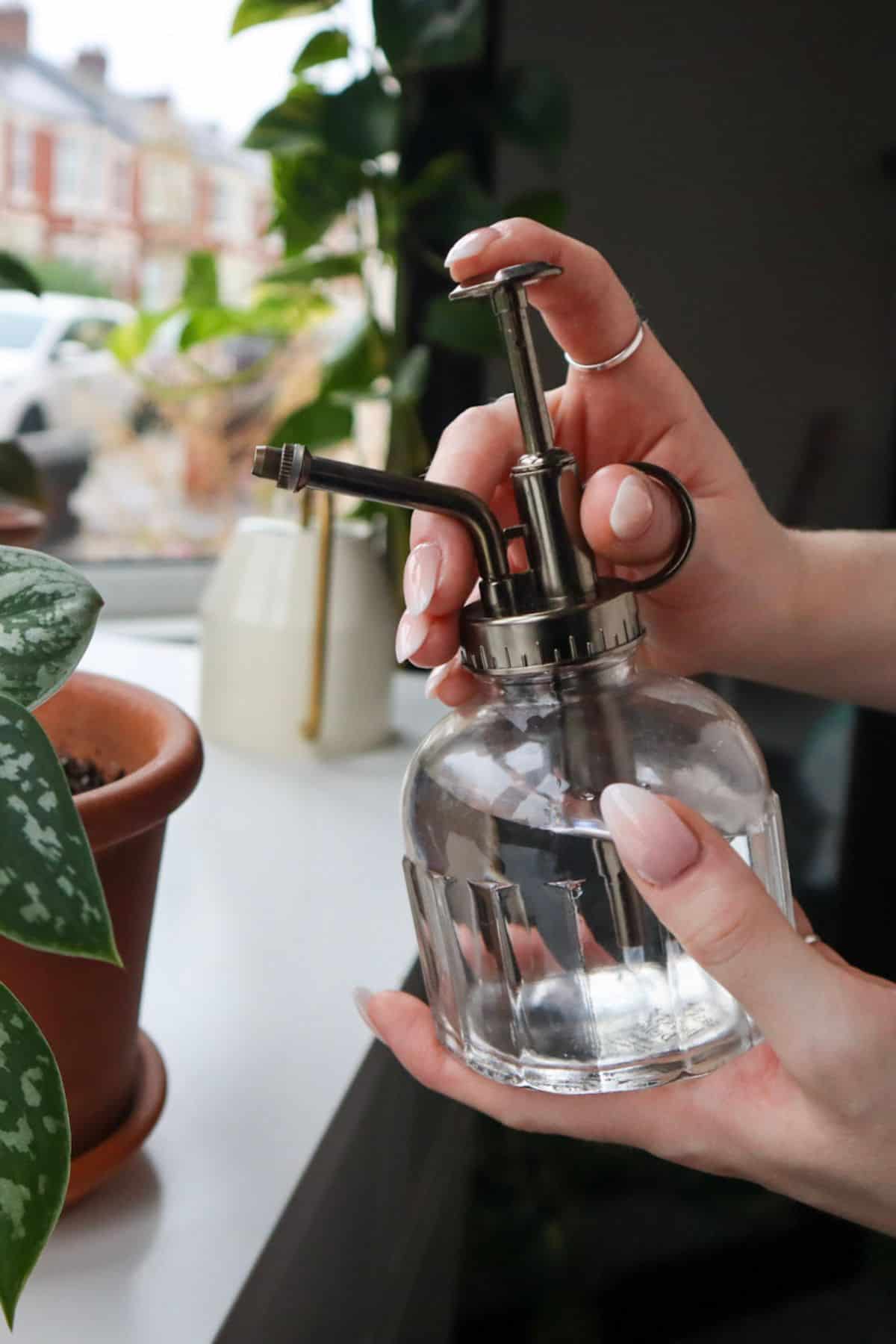
These days, I use a regular spray bottle. They’re affordable, sturdy, and get the job done – just don’t have it set to jet spray…
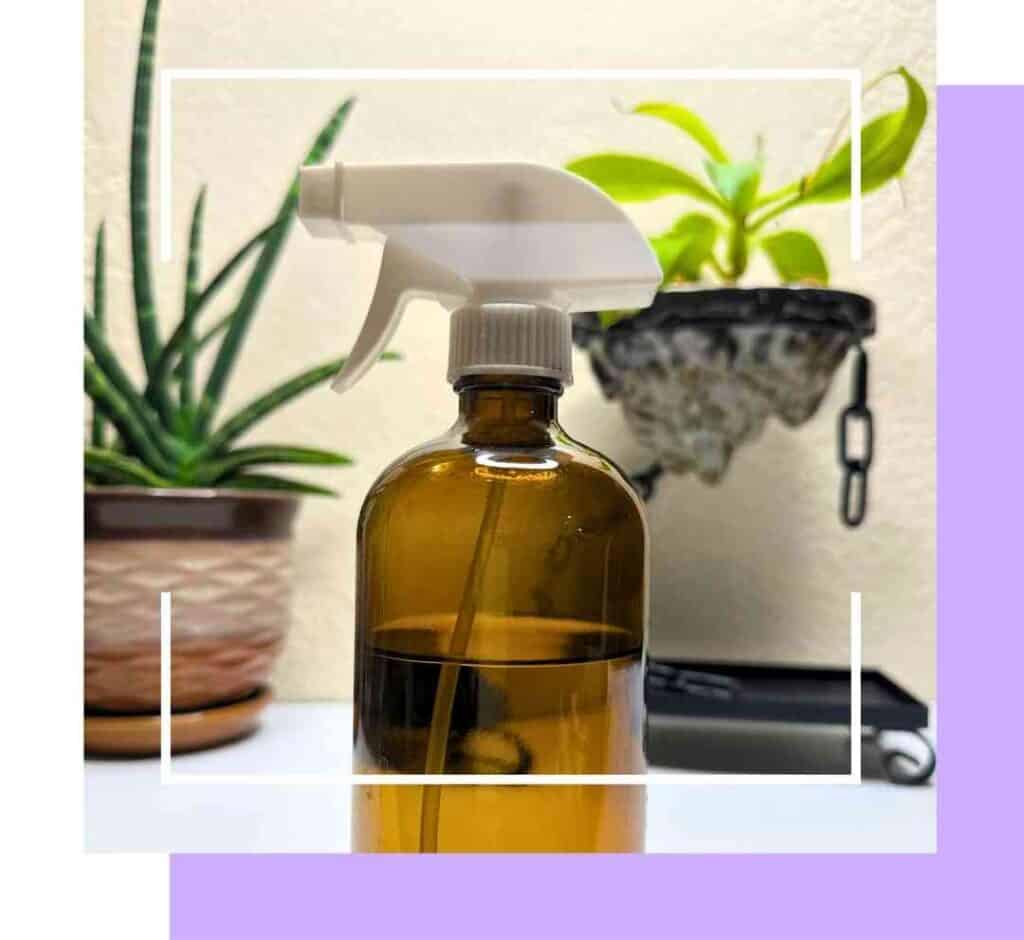
Terrarium Spray Bottle (16oz) | Amber Glass
Compact, versatile (and very pretty) terrarium mister.
Available on the Terrarium Tribe Store.
6. Springtails (The Clean-Up Crew)
Plants perish. It doesn’t mean you’re a bad plant parent, but it does mean that you need a system to deal with that material so it doesn’t turn into mold.
Enter Springtails – tiny detritivorous bugs (meaning they eat decaying matter) that are pretty much essential if you want your closed terrarium to go the distance.
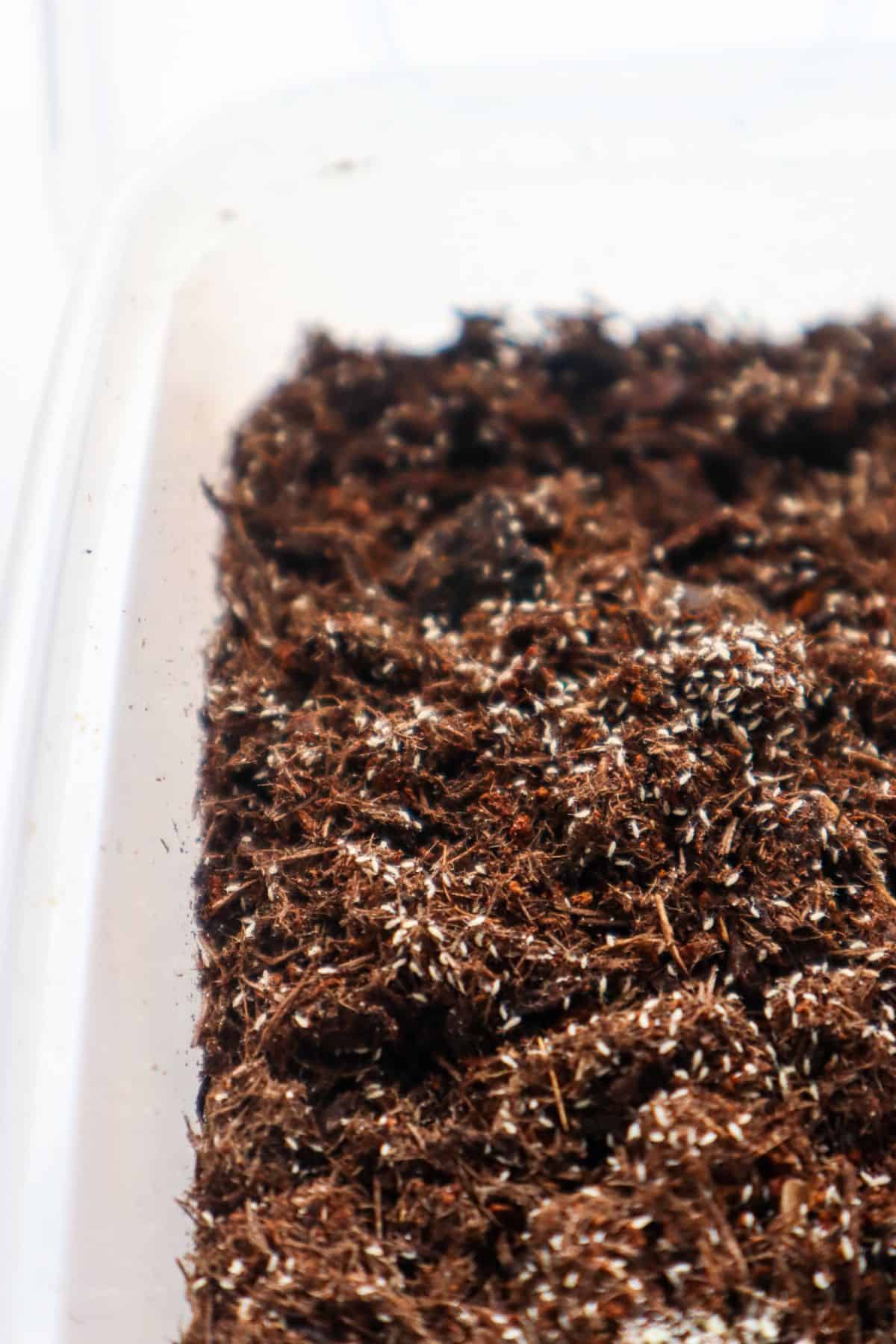
Non-Essential, but Really Handy Terrarium Tools
Funnel/Scoop
Funnels can be a really useful tool when making a terrarium.
I’d go as far as to say they’re essential for getting your drainage and substrate in if you’re using a bottle or similar glassware.
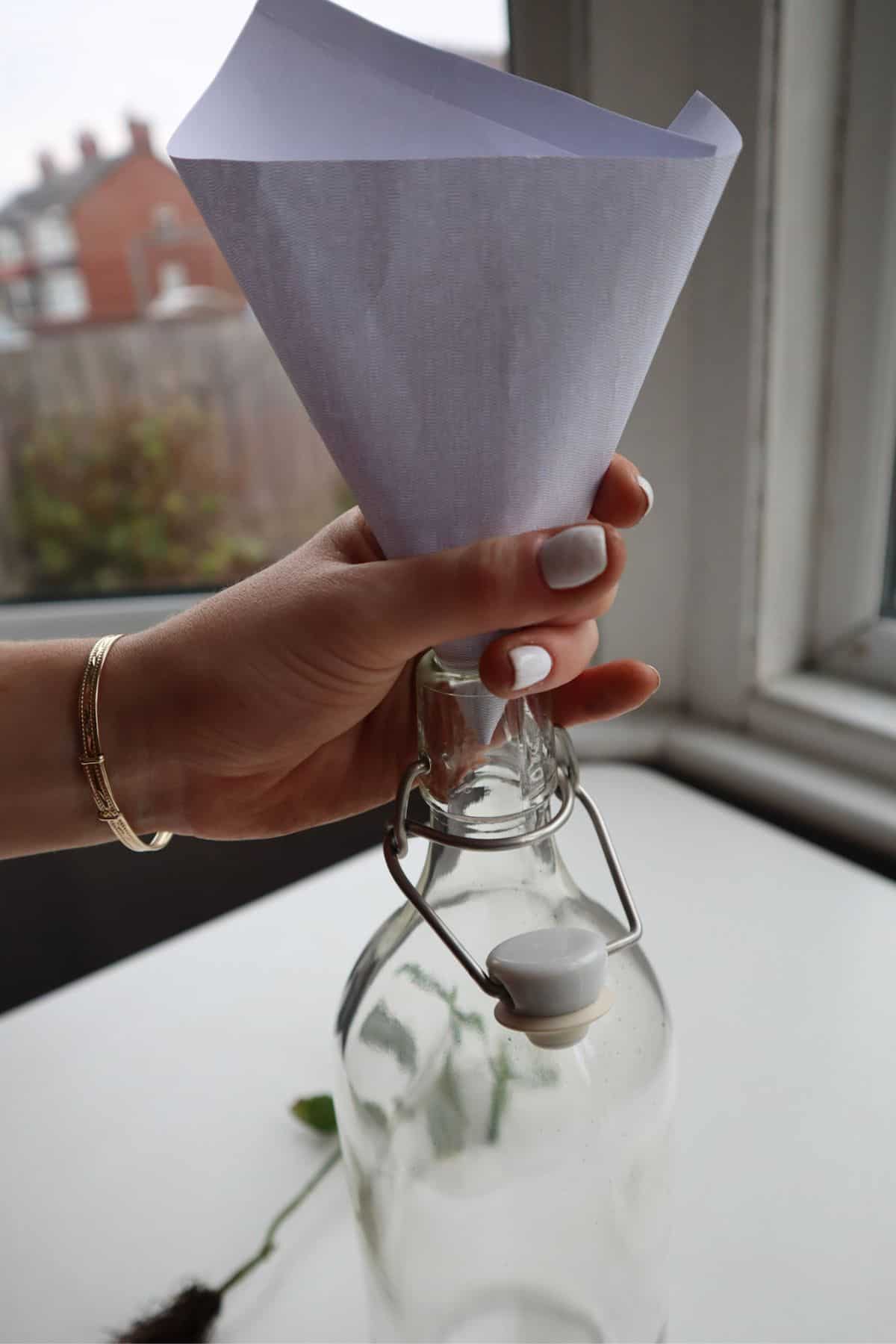
But it’s not just bottle terrariums; they can also be helpful in other types of builds.
For example, if you want to work with sand art or add some decorative gravel, you can direct it where you want in your terrarium instead of dumping it all in the middle.
A funnel with a long and slim neck will provide the most accuracy.
👉 Check out the funnels on Amazon (I like the ones made for cars).
In a similar vein, for terrariums with larger openings, a scoop is very useful in not creating a tonne of mess.

Flexible Grabber Tool
If you’re building a carboy or demijohn terrarium, you will almost certainly need to get your hands on a flexible grabber tool.
Without one, you’d be limited to placing plants by dropping them directly beneath the opening. This tool gives you the flexibility to plant around the container.
It works by grabbing the plant/moss and releasing it in the desired place. Because it’s flexible, you can get it into any position you like.


Secateurs
Sometimes, your scissors just won’t cut it (sorry, I’ll stop).
If you’re using dried logs or branches in your build, you might need to get them down to size before they fit properly in a terrarium.
The thing is, the best types of wood for terrariums are usually hardwoods. Meaning they’re super tough (like manzanita wood or grapevine wood). And to cut them, you’re going to need something more heavy-duty.
Anvil secateurs are the best tool for the job. They have a blade on one side and a flat plate on the other, giving them less precision but far more power.
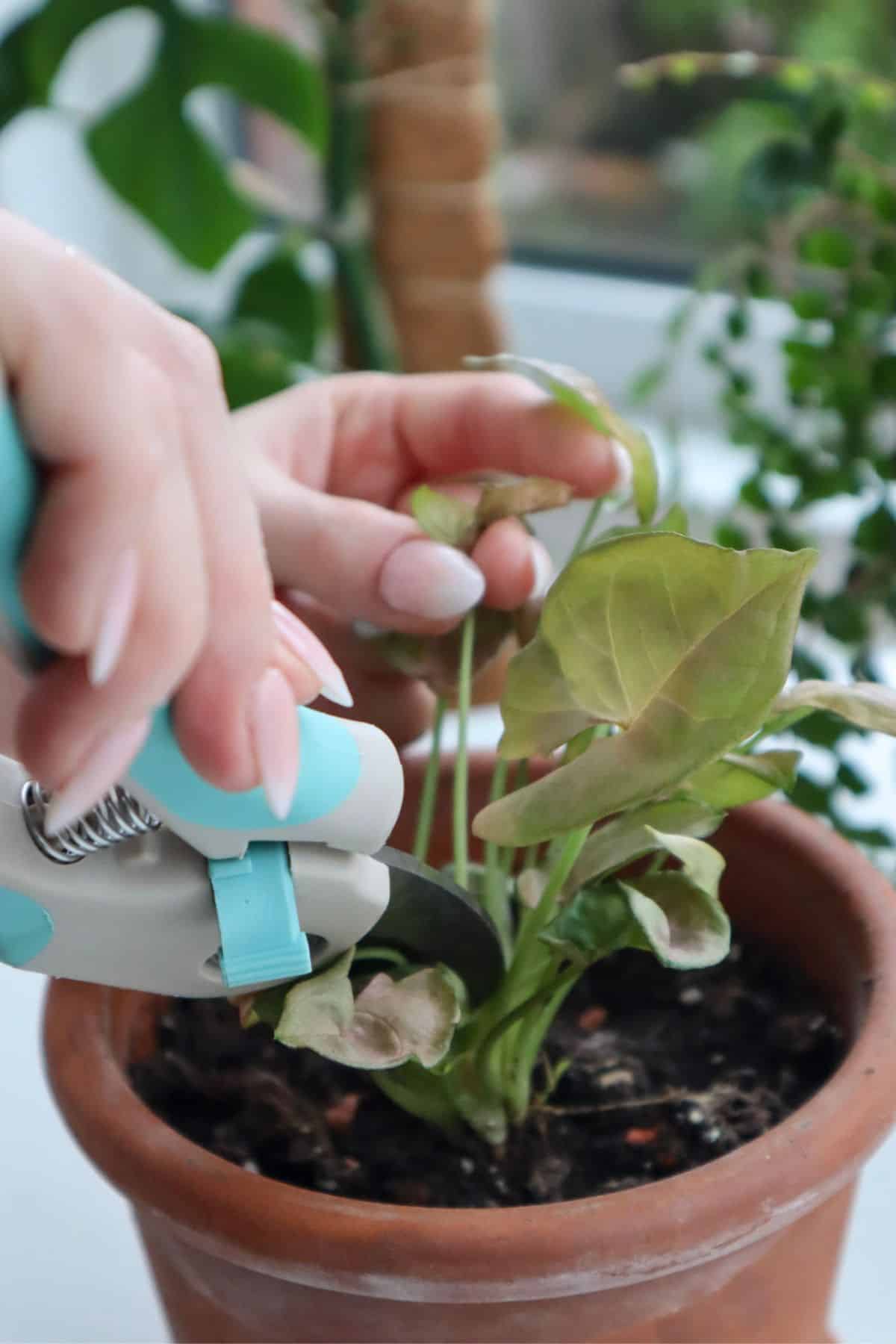
👉 You can also (unsurprisingly) pick a pair up from Amazon.
Plant Glue
Superglue may seem like a harsh chemical that would be harmful to plants, but superglue is 100% safe to use on plants. Woo!
Great for attaching hardscape pieces together and great for carefully adhering epiphytes.
The gel-based ones are the best for terrariums as they’re more precise and a lot less messy.

👉 Check out plant glue/superglue on Buceplant and Amazon.
Grow Lights
If you live anywhere half as gloomy as I do (the ever-drizzly North-East of England), grow lights can help your terrariums get through the harsh winter.
You can go really high-tech and expensive here, but I just got cheap lampshades from Ikea and grow light bulbs from Amazon.
👉 See the grow lights on Amazon.
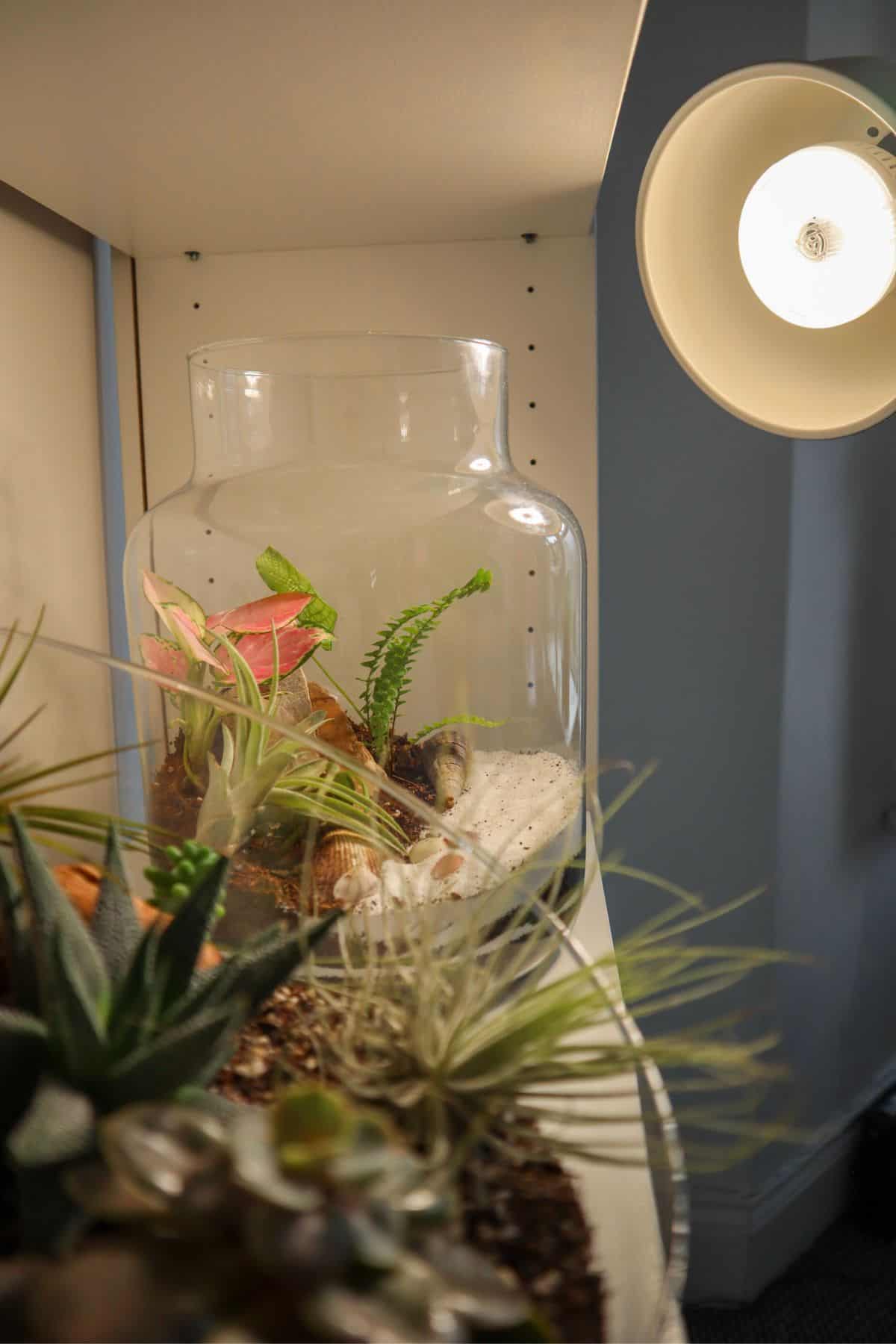
Terrarium Tool FAQ
Absolutely! Every terrarium is unique, and sometimes you need to fashion some custom tools for the job. Attaching forks and spoons to bamboo rods is an easy way to get some extra long terrarium tools.
Yes, there are lots of terrarium tool kits available online, and they can be good quality; just make sure to prioritize length and avoid the overly chunky short ones – see the range on Etsy.
Over to You
Are there any terrarium tools that I’ve missed?
Let me know if there are any indispensable tools in your kit.
Different projects will throw up new challenges and new potential tools to overcome them. This is by no means an exhaustive list, and I’d love to hear of any tools that you find really helpful.
Also, if you’re ready to embark on your first terrarium build, check out the terrarium supplies on our online store!
We don’t sell tools yet, but we have just about everything else you might need.

Cant wait to learn more about terrariums
Thanks for this information. Do you know where the telescopic tools can be purchased? The link isn’t working. Thank you.
Hi Pat, thanks for pointing that out. I’ve updated the link for if you’re in the UK (still trying to find somewhere that sells them in the US).
Thanks for the updates Dan n Rae🙏 I love reading your site in the morning with my coffee. I have been getting all the bits I need together before starting and I’m finally ready 🤗 please don’t stop your little quirky comments they make me chuckle 🤣
You’re so kind Tanya!